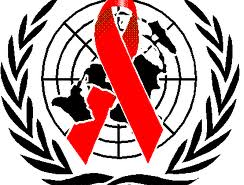UNAIDS just released a 30 year stock taking of the global fight against HIV/AIDS. The report, AIDS at 30: Nations at the Crossroads, is voluminous, but contains some interesting factual nuggets about recent progress against the disease.
About 6.6 million people were receiving antiretroviral therapy in low- and middle-income countries at the end of 2010, a nearly 22-fold increase since 2001, according to a new report AIDS at 30: Nations at the crossroads, released today by the Joint United Nations Programme on HIV/AIDS (UNAIDS).
A record 1.4 million people started lifesaving treatment in 2010—more than any year before. According to the report, at least 420 000 children were receiving antiretroviral therapy at the end of 2010, a more than 50% increase since 2008, when 275 000 children were on treatment.
And
According to the report, the global rate of new HIV infections declined by nearly 25% between 2001 and 2009. In India, the rate of new HIV infections fell by more than 50% and in South Africa by more than 35%; both countries have the largest number of people living with HIV on their continents.
The report found that in the third decade of the epidemic, people were starting to adopt safer sexual behaviors, reflecting the impact of HIV prevention and awareness efforts. However, there are still important gaps. Young men are more likely to be informed about HIV prevention than young women. Recent Demographic Health Surveys found that an estimated 74% of young men know that condoms are effective in preventing HIV infection, compared to just 49% of young women.
In recent years, there has been significant progress in preventing new HIV infections among children as increasing numbers of pregnant women living with HIV have gained access to antiretroviral prophylaxis during pregnancy, delivery and breastfeeding. The number of children newly infected with HIV in 2009 was 26% lower than in 2001.
And:
According to the latest estimates from UNAIDS, 34 million [30.9 million–36.9 million] people were living with HIV at the end of 2010 and nearly 30 million [25 million–33 million] have died from AIDS-related causes since AIDS was first reported 30 years ago.
Despite expanded access to antiretroviral therapy, a major treatment gap remains. At the end of 2010, 9 million people who were eligible for treatment did not have access. Treatment access for children is lower than for adults—only 28% of eligible children were receiving antiretroviral therapy in 2009, compared to 36% coverage for people of all ages.
While the rate of new HIV infections has declined globally, the total number of HIV infections remains high, at about 7000 per day. The global reduction in the rate of new HIV infections hides regional variations. According to the report, above-average declines in new HIV infections were recorded in sub-Saharan Africa and in South-East Asia, while Latin America and the Caribbean experienced more modest reductions of less than 25%. There has been an increase in the rate of new HIV infections in Eastern Europe and in the Middle East and North Africa.
In virtually all countries, HIV prevalence among populations at increased risk of HIV infection—men who have sex with men, people who inject drugs, sex workers and their clients, and transgender people—is higher than among other populations. Access to HIV prevention and treatment for populations at higher risk of infection is generally lower due to punitive and discriminatory laws, and stigma and discrimination. As of April 2011, 79 countries, territories and areas criminalize consensual same-sex relations; 116 countries, territories and areas criminalize some aspect of sex work; and 32 countries have laws that allow for the death penalty for drug-related offences.
I bolded that last part because making a dent in the fight against AIDS requires lowering the stigma around what health officials call Most At Risk Populations (MARPs). So long as Men who have Sex with Men believe they are likely to get arrested or harassed by authorities, they may stay out of national health systems treatment plans. The same is true for injecting drug users and sex workers.
In Bangladesh a couple of months ago, I visited a few cutting edge programs that try to reach these populations, despite the fact that they are engaged in illicit activities. The intervention used are called “Drop in Centers” which serve as neighborhood based community centers where, for example, men who have sex with men can receive medical care without the fear of a doctor ratting them out to authorities. (Bangladesh is one of those 79 countries where same consensual same sex relations are prohibited by law). There are also several neighborhood based Drop in Centers for sex workers and drug users throughout Dhaka and Chittagong–Bangladesh’s two largest cities.
These programs are generally run by NGOs and financed through international mechanisms like the Global Fund to Fight AIDS, TB and Malaria. Even in countries like Bangladesh in which HIV prevalence is relatively low (less than 1% of the population), the prevalence in MARPs is much, much higher. The same is true around the world.
Fighting HIV/AIDS requires ending the stigma around these populations so that they may have easier access to treatment and prevention services. Changing attitudes is always a long term endeavor, but it is what is ultimately needed.
